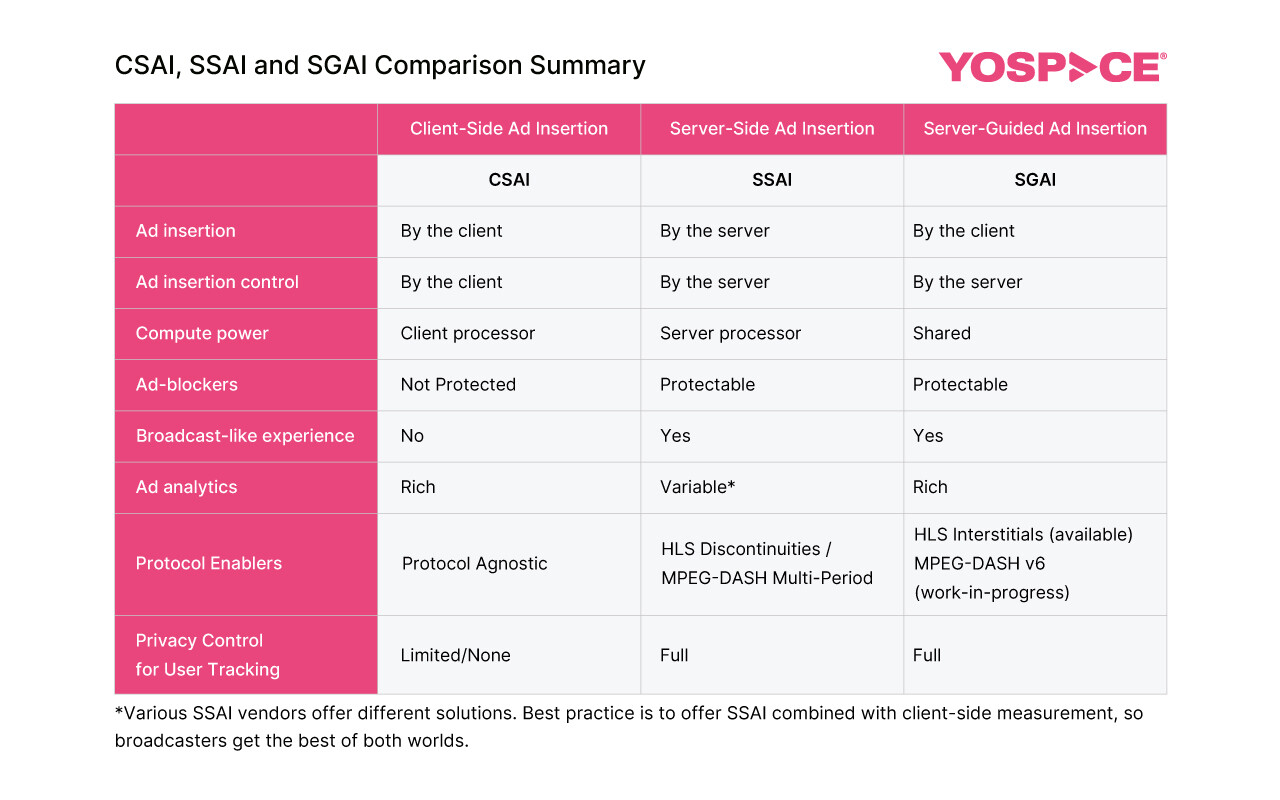Will SGAI Become an Industry Norm for Dynamic Ad Insertion?
For live sports and events, server-guided ad insertion enables scalable ad delivery, even during high-demand moments

The growth in live sports streaming underscores the importance of dynamic ad insertion (DAI) to maximize monetization. Platforms are investing very heavily in content, recognizing its ability to attract dedicated audiences.
Prime Video’s exclusive rights to Thursday Night Football in the U.S. and English Premier League (EPL) games in the UK, alongside Netflix's NFL content, highlight this shift toward event-driven, addressable advertising. Streaming allows these platforms to cater to vast audiences while creating personalized ad opportunities—a feat made possible by DAI.
DAI, long established across the industry, is critical in powering this required revenue growth, seamlessly integrating tailored ads while maintaining the high-quality experience sports fans, in particular, expect (so long as DAI is correctly implemented). Now there are further advances happening in DAI from an ad-stitching standpoint.
Up to now, there have been two methods to deliver ads into video streams:
Client-side ad insertion (CSAI)
An early market approach that involves the client device pausing playback to fetch ads from servers. While it allows detailed tracking, CSAI is vulnerable to ad blockers and often results in inconsistent playback quality. These limitations restrict its ability to insert ads into live streams, so CSAI is only practical for AVOD.
Server-Side Ad Insertion (SSAI)
Shifts ad insertion to the server, stitching ads directly into the video stream for a smooth, broadcast-like experience and has proven very successful. This addresses many of CSAI’s issues, but has to efficiently scale during live events with potentially very large audiences and can place constraints on some of the UX features relating to DVR use cases.
There’s growing talk about Server-Guided Ad Insertion (SGAI), a new method for ad stitching which combines the strengths of both approaches. A big difference, however, is that SGAI is being developed in accordance with the latest HLS and MPEG-DASH standards, which sees the industry pulling together around ad insertion best practice to a level that has not been evident before.
While SGAI may not be the paradigm shift that SSAI was to CSAI, it does promise a range of benefits compared to what has gone before. In SGAI, the server and client share the ad insertion process, which reduces server load while maintaining the seamless playback experience of SSAI.
For live sports and events, SGAI enables scalable ad delivery, even during high-demand moments, by eliminating the need for servers to manipulate the primary content for each viewer. While server-side compute resources are needed to interact with the ad server, a well-designed SGAI system doesn’t have to manipulate the primary content manifest. For live streams with a long DVR window, SGAI has the potential to realize considerable savings.

Additionally, its compatibility with low-latency streaming makes SGAI ideal for real-time events. This is down to the separation of the primary content from advertising content (the motivation behind the HLS SGAI extensions, known as interstitials, was to make low-latency HLS more compatible with DAI).
A benefit of SGAI as a standardized approach is that it will ensure broader compatibility and adoption across devices and platforms.
With long DVR/live start-over and VOD, SGAI’s ability for breaks to be resolved dynamically is also important. For VOD, this has the potential to reduce start-up time as decisions about all breaks other than a pre-roll placement can be deferred. It allows the ad payload to reflect the user’s behavior within the stream, rather than needing ads to be loaded at the start of the viewing session, which is currently the case with SSAI.
For long DVR windows in live and start over, historic breaks within the timeline can be resolved dynamically — as determined by the user scrubbing around the timeline. Due to immutability rules within HLS and MPEG-DASH prior to their SGAI extensions, this has previously not been possible with pure SSAI.
A benefit of SGAI as a standardized approach — a process in which Yospace is playing a key role — is that it will ensure broader compatibility and adoption across devices and platforms, setting the stage for SGAI to become the industry norm.
Transition Period
SGAI has garnered a lot of interest and understandably so, but there are caveats. While it does provide significant optimizations to the fundamentals of ad stitching, in deployment terms SGAI-capable players and devices are in the minority at the moment. We will enter a transition period, as the players within the usual devices of interest to broadcasters implement the SGAI extensions. And it always has to be kept in mind that ad stitching is only one part, albeit a fundamental part, of a cutting-edge dynamic ad insertion ecosystem.
Consider the added load on adtech that an ultra-low-latency SGAI stream will bring. “Knife-edge” ad requests at scale will cause tremendous bursts of ad requests to the adtech system. In unpredictable live sports situations, the adtech system can end up being flooded with ad calls and overwhelm the SSP and any downstream DSPs. In such an overload situation, far more VAST ad requests to the SSP may end up timing out than expected, resulting in low fill rates during peak audiences. A prefetch system alongside ad stitching is crucial to spread out requests and deliver the highest possible fill-rates.
As SGAI treads its way to becoming the primary method for performing ad stitching over the coming years, it’s important to remember that ad stitching is just one of several responsibilities of a full dynamic ad insertion solution. DAI must collaborate effectively with adtech to elevate the core capabilities of SSAI or SGAI. Improving adtech interactions and scaling capabilities is the best way to improve DAI performance right now. It will also enhance the performance of SGAI as we transition from CSAI / SSAI to a hybrid world and eventually perhaps, a pure SGAI world.
Get the TV Tech Newsletter
The professional video industry's #1 source for news, trends and product and tech information. Sign up below.
Tim Sewell is CEO of Yospace

